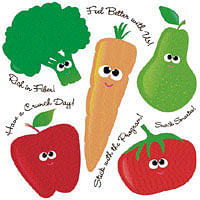Students of class V and VIII will have colourful textbooks with ample illustrations and simple interesting experiments to practise, as part of their syllabus, the next academic year.

The new textbooks have been designed with a child-friendly focus and in tune with the guidelines of the National Curriculum prescribed by the Union government. The printing of new textbooks will be completed by April end, officials of the State Textbook Society told Deccan Herald.
“The textbook for each subject was reviewed at four levels by experts. For the first time, the textbooks were reviewed by a State editorial board comprising experts,” said Prof G S Moodambadithaya, co-ordinator of the Society.
Among those who have contributed for the curriculum are noted humorist and litterateur Prof AR Mitra, Dr Shiva Kumar, Department of Mathematics, RV College of Engineering, Prof C S Ramachandra, University of Mysore, among other senior educationists.
While all the textbooks for class V will be in colour, it is so only for science books of class VIII. Students will also be learning Business Studies and Political Science from the next academic year. Books on physical education, value education and yoga are the new features included.
A chapter on life and environment has been introduced in the Social Science textbook for class V. Students of Gulbarga, Belgaum, Bangalore and Mysore, the four education divisions, will learn about the local environment.
Dr C S Ramachandra, Professor of Linguistics, University of Mysore, who was involved in framing the syllabus for the Kannada textbook, said the curriculum had been set factoring student’s psychology, social and cultural backgrounds.
“Earlier, grammar was primarily theory, where the students were taught the usage after learning the theory. Now, it will be the other way round which will make learning of grammar easy and interesting,” he said. Also, poems from various different regions are included to make students from each regions feel at ease. “Those from Haveri can associate with poet Chennaveera Kanavi, while students from Dharwad can relate to poems by Hiremallu Eshwar,” he said. There is a blend of Navya, Bandaya and Navodaya poetry, Dr Ramachandra added.
Self-instruction
Another feature in the new textbooks is the self-instruction material for students. This has been added to help the students be able to learn concepts on their own, without completely depending on the teachers.
Simple experiments
In science, lots of simple experiments that can be conducted at home have been included. This has been done keeping in mind issues of lack of access to high quality labs in rural areas. /
“The idea is to introduce the concept and not impose it on the students,” said Prof M R Nagaraj, a member of the editorial committee.
The State Temperance Board has proposed an entire chapter on the evils of alcoholism in school textbooks. “Framing the chapter is in the hands of the academicians. What we propose is a separate chapter on the issue as the age of addiction to alcohol is falling steadily,” said chairperson of the State Temperance Board Sachidananda Hegde.
He said even primary school children were getting induced into the habit and hence it was important to create awareness at the school-level.
The Society officials, pointed out that their research and effort may go vain if teachers were not updated on the methodology to impart the upgraded syllabus.